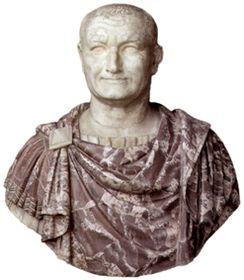Info sheet 10 Roman coins
An informative compilation about the early Roman coins, as well as a detailed description of the coins in our shop.
Roman money
Roman currency refers to the entirety of the means of payment used in the ancient Roman Empire. After the Roman Republic had issued bronze and later silver currency only very irregularly during its rise to great power, a new and highly differentiated monetary system was introduced in 212/211 BC, which was based on the denarius and is therefore called the "denarius system".
It lasted for centuries and, with some modifications, lasted until the later imperial period, when it collapsed in the so-called "imperial crisis of the 3rd century", mainly due to a strong devaluation of the coins issued.
In the late 3rd and early 4th centuries, a new system of coinage nominals was then introduced which, although it did not prove as stable as the denarius system, remained in force during late antiquity and had influence into the Middle Ages.
"Pecunia non olet!" - Money does not stink
Emperor Vespasian had taken over from his predecessor Nero a state that was almost bankrupt.
Vespasian reorganised the public budgets with great success. His ingenuity in increasing state revenues was great. Among other things, he introduced a tax on public latrines. When his son Titus objected to this, he held some coins from the tax revenue under his nose and asked if this smell bothered him. Titus had to concede that the money did not stink: Pecunia non olet.
The saying has persisted to this day to justify the possession of money from dubious sources of revenue. The public toilets in Paris are still called "Vespasienne" today. In Italy, too, the public toilets are called "Vespasiani".

